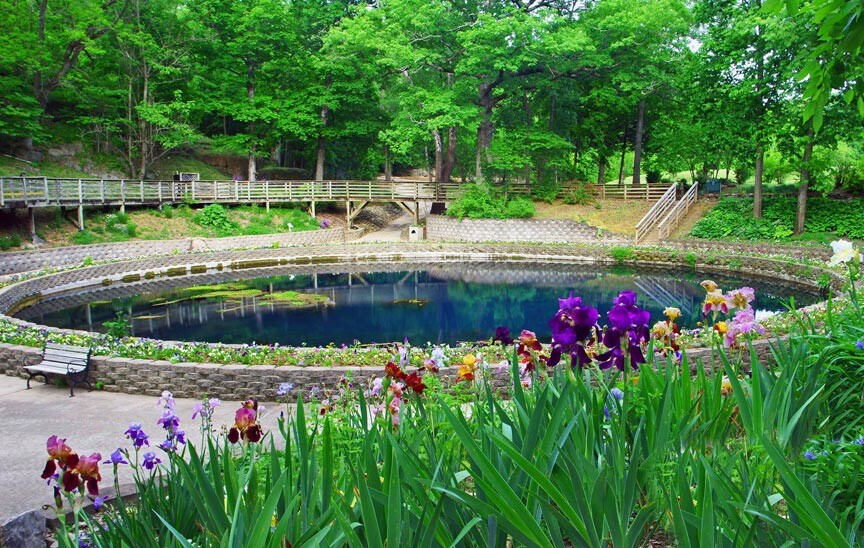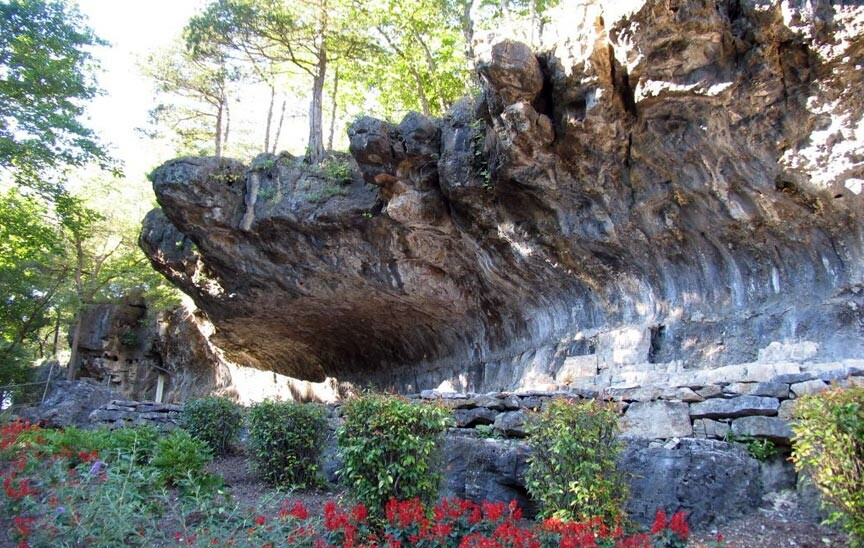
Though Blue Spring has seen different uses and been landscaped over the years, the special area retains its beauty. The natural spring produces 38 million gallons of fresh, clear, 54-degree water every day. This water fills a deep, round pool encircled with flowers before spilling over into a trout-filled lagoon, then over a small dam and down to the White River.
No one is quite sure of the spring’s source. Some say it may be as deep as 500 feet, others contend the water comes from as far away as Alaska. Whatever the truth, it’s an enchanting place to visit.
Native American History at Blue Spring
Blue Spring has drawn visitors since before the marking of time. Native Americans have traveled to Blue Spring for tens of thousands of years. And who can blame them? A nearby, overhanging stone bluff offers plenty of shelter, just steps away from the spring.
A 1971 archeological dig here uncovered native artifacts dating back as far as 8000 BCE. It also earned the Bluff Shelter a place on the National Register of Historic Places.
The spring’s Native American connection continued into a darker chapter when it was used as a stopping point along the Cherokee Trail of Tears. Many of that Nation’s people camped at Blue Spring during their forced relocation to “Indian Territory,” in what is now Oklahoma.
Visiting Blue Spring Heritage Center
Blue Spring Heritage Center is located at 1537 Co Rd 210, just 15 minutes from the door of our Eureka Springs inn, 5 Ojo. The center is open daily, 9am to 6pm, from March 15th through the second Sunday in November.
The center’s 33 acres include lots to see but we suggest starting off at the Visitor Center. Here you can watch a short film about the spring’s history as well as view related artifacts and historic photos.
After viewing the film and perusing the museum, you’ll want to start exploring. Over a mile of trails wind through the Center, taking you through gardens and to different points of interest.

Along with the spring pools and the Bluff Shelter, there are also remnants of a historic mill. Blue Spring Mill, located some 300 feet downstream, was built in the early 1840’s to grind corn. A newer mill replaced it in 1903, only to be taken back down in 1943. Today, only the turbine remains.
The center is also home to three special gardens. The Medicine Wheel Garden is filled with plants important to Native American spiritual practices. The Three Sisters Garden demonstrates native ingenuity via a traditional interdependent community of plants. The Woodland Gardens presents plantings amidst the native timber.
Interpretive signs throughout the grounds provide details and information on different details of the spring and the historic events that occurred here.
Visit www.bluespringheritage.com for more information. You can also visit the spring on Facebook.
